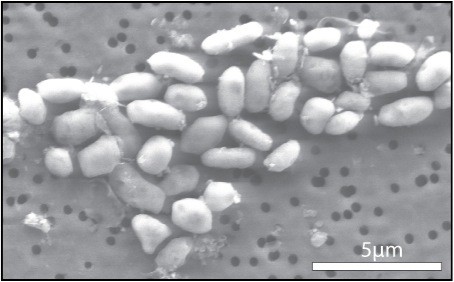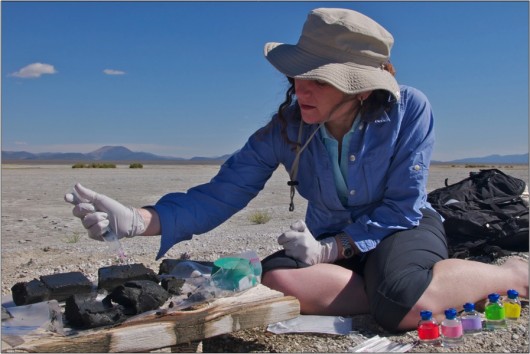
The GFAJ-1 bacteria, grown on arsenic
In a press conference held today, scientists working with NASA announced the discovery of a new microorganism right here on Earth that employs a survival strategy never seen before in any other life form. Found in Northern California’s highly-saline Mono Lake, the GFAJ-1 bacteria exists in an environment that has very little phosphorous, an element that had previously been considered essential for all living things in order to build DNA. To cope with this problem, the bacteria is able to substitute highly-toxic arsenic for phosphorous, in its cell components. The fact that a microbe is able to survive in such a fashion opens up the possibilities for where life could exist on other planets, and will require a rethink on NASA’s part regarding its search for extraterrestrial life forms.
Until this announcement, it had been assumed that carbon, hydrogen, nitrogen, oxygen, phosphorus and sulfur were required for any terrestrial organism to grow. Phosphorous is considered to be an essential part of the backbone of DNA and RNA. Arsenic, on the other hand, is highly poisonous to most life forms – it is, however, chemically-similar to phosphorous.
Felisa Wolfe-Simon, a NASA Astrobiology Research Fellow in residence at the U.S. Geological Survey, led a team that first discovered GFAJ-1 in the salty, alkaline mud of Mono Lake. Mud from the lake was taken back to her lab, and placed in a medium that (like the lake) had very little phosphorous, but lots of arsenic. The bacteria was observed growing in the mud, despite everything. When analyzed, the GFAJ-1 were found to be using the arsenic as phosphorous.
“What I’ve presented to you today is a microbe, doing something different than life as we knew it,” said Wolfe-Simon. “We’ve cracked open the door to what’s possible for life elsewhere in the universe, and that’s profound.”
“I find this result delightful, because it makes me have to expand my notion of what environmental constituents might enable habitability,” added Pamela Conrad, of NASA’s Jet Propulsion Laboratory. “We still don’t know everything there is to know about what might make a habitable environment on another planet.”
The research was published today in the journal Science.
All images courtesy NASA.
Copyright © gizmag 2003 - 2010 To subscribe or visit go to: http://www.gizmag.com
